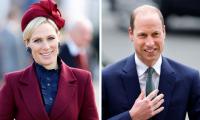KARACHI: Rupee on Wednesday fell 3.1 percent to hit nearly a four-year low of Rs108.25 against the US dollar in the interbank market, prompting an emergency meeting of the finance ministry to fight off what it said an ‘artificial’ depreciation.
“The Finance Minister Ishaq Dar, during an emergent meeting of the officials of finance division, has taken notice, expressed deep concern, indignation and disappointment at the fact that the current political situation is being exploited by certain individuals, banks and entities, resulting in the artificial rise of the interbank rate of the US dollar versus the Pakistani Rupee, which has negatively affected our foreign exchange markets,” a ministry’s statement said. “The Finance Minister said that the responsible persons and entities in this matter will be identified and appropriate action will be taken against them in the national interest.”
On Tuesday, rupee closed at Rs104.90. The rupee quoted weaker at 108.50/109.50 against dollar during intraday trade in the interbank market. Analysts, however, said the central bank used political uncertainty as an opportunity to depreciate the rupee. But, they surprised over a rapid downward trend of rupee when foreign exchange demand from importers remained lower.
The country is in a grip of political uncertainty following a probe against Prime Minister Nawaz Sharif and his family members related to Panama corruption case. The State Bank of Pakistan (SBP) said the depreciation will address the emerging imbalance in the external account and strengthen the growth prospects of the country.
“While almost all the macroeconomic indicators have been showing encouraging picture, such as decade-high real GDP growth, increase in investment, credit expansion to private sector, and subdued inflation; the deficit in the external account has been rising for some time,” SBP said in a statement.
Rupee has not gone down to such a lowest level since December 2013. The rupee/dollar parity had been stable at 104.85/90 since December 2015. Topline Research, in a report, said rupee has been losing five percent annually during the last 10 years.
The International Monetary Fund, in its latest report, said monetary policy has been appropriately accommodative. It urged SBP to remain vigilant and be ready to tighten it in case inflationary pressures emerge or foreign exchange market pressures intensify.
The current account deficit rose to $8.929 billion or 3 .2 percent of gross domestic product in 11 months of the recently-concluded fiscal year of 2016/17. Analysts feared the current account gap to reach $12 billion during the current fiscal year, while the SBP’s reserves could drop to $8 billion.
SBP’s reserves amounted to $16.376 billion as of June 23 despite widening current account deficit. The reserve position is attributed to short- and long-term loans and rise in foreign direct investment.
A treasury head at a leading bank said ongoing political turmoil caught the market by shock with some investors losing confidence on the prospects of political and economic stability. “Lack of intervention by the SBP in the official market at some point intensified pressure on the exchange rate,” he said on condition of anonymity.
The market was expecting a gradual depreciation in rupee value due to widening current account deficit. “Such devaluation was long overdue as rupee was overvalued by roughly 12 percent,” said Eman Khan, an analyst at Tresmark Research.
SBP, in the statement, said it believes that the current exchange rate is broadly aligned with the economic fundamentals. “SBP will continue to closely monitor the developments in the foreign exchange markets and stands ready to ensure stability in the financial markets,” it added.
An analyst said the depreciation may boost the ailing exports.







